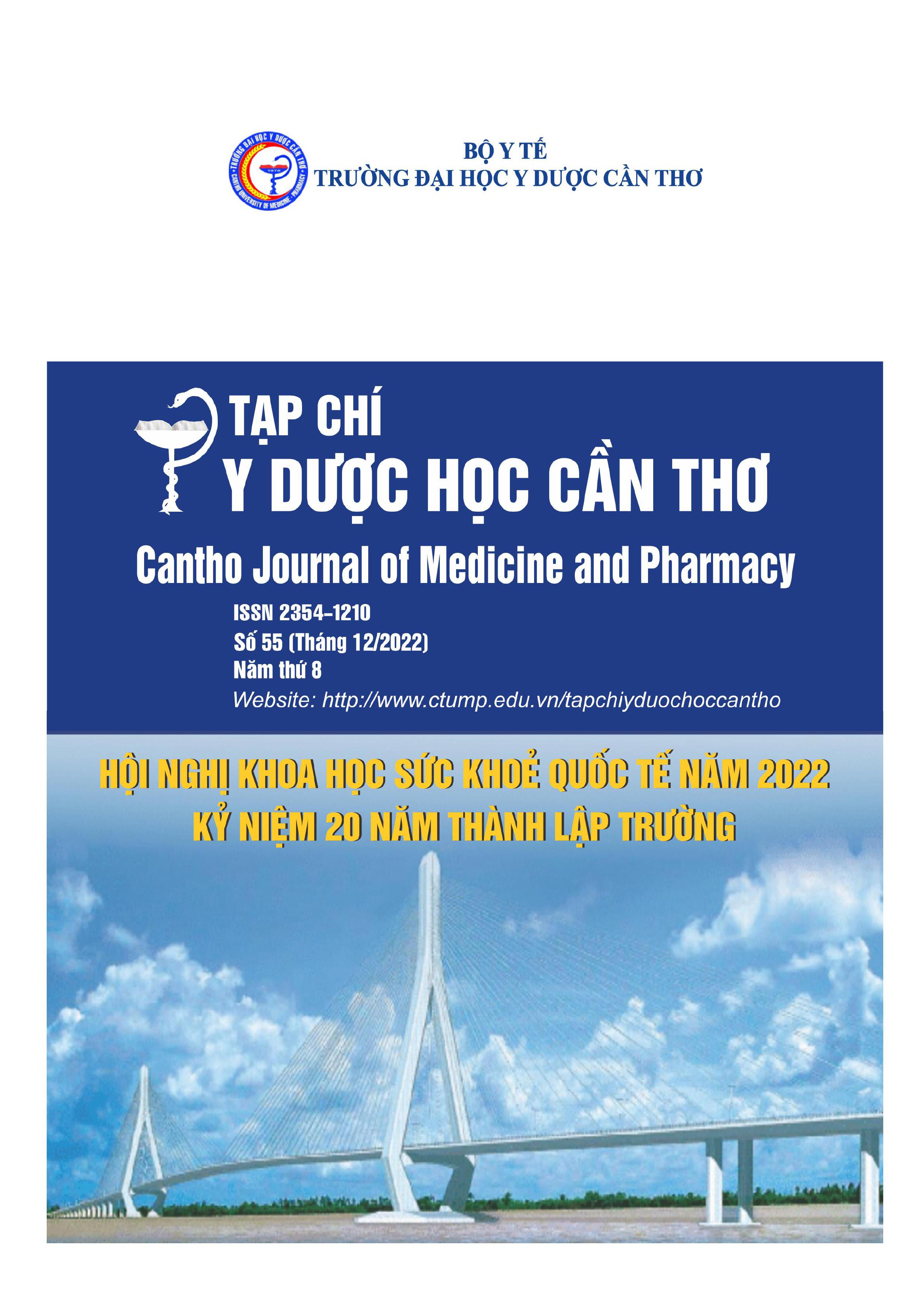RELATIONSHIP BETWEEN HPV-DNA TRANSITION AND CERVICAL CYTOLOGICAL IN WOMEN IN CAN THO CITY FROM 2013 TO 2020
Main Article Content
Abstract
Background: Cervical damage was changed over time and this change is influenced by many factors, including HPV-DNA transition over time. Objectives: To determine the relationship between HPV-DNA transition and cervical cytological changes in infected women aged 18-69 years in Can Tho city from 2013 to 2020. Materials and methods: Cohort study search with 213 women in 9 districts in Can Tho City. All women were interviewed and tested for HPV-DNA, PAP, VIA, and histopathology at two time points 2013 and 2020. Then, the change of the test results was determined in the negative direction (from negative in 2013 turned positive in 2020) and found their association. Results: Women with HPV-DNA transition had the risk of VIA transition 2.9 times compared with women without transition with 95% CI: 1.4-5.9. Women with HPV-DNA transition are not related to PAP variation and pathology. But, persistent HPV-infected women from 2013 to 2020 had the risk of pathological change 16.5 times compared with non-persistent infected women with 95% CI: 1.6-175. Conclusion: HPV-DNA transition increases the risk of VIA changes.
Article Details
Keywords
HPV, PAP, VIA, histopathology, cervical cytological transition
References
2. Trần Ngọc Dung và cộng sự (2016), Nghiên cứu tình hình nhiễm HPV ở phụ nữ thành phố Cần Thơ bằng kỹ thuật PCR. Sở Khoa học - Công nghệ thành phố Cần Thơ.
3. Trương Quang Vinh (2010), Nghiên cứu nhiễm Human papilloma virus ở các phụ nữ có các tổn thương tiền ung thư và ung thư cổ tử cung. Luận án tiến sĩ Y học, Trường Đại học Y Dược Huế.
4. Andreas C Chrysostomou, Dora C. Stylianou, Anastasia Constantinidou and Leondios G. Kostrikis (2018), Cervical Cancer Screening Programs in Europe: The Transition Towards HPV Vaccination and Population-Based HPV Testing. Viruses, 729 (10), pp.1-35.
5. Bigras G and F de Marval (2005), The probability for a Pap test to be abnormal is directly proportional to HPV viral load: results from a Swiss study comparing HPV testing and liquid based cytology to detect cervical cancer precursors in 13.842 women. British Journal of Cancer, 93, pp.575-581.
6. Dai Zhang, Ting Li, Lei Chen et al. (2017), Epidemiological investigation of the relationship between common lower genital tract infections and high-risk human papillomavirus infections among women in Beijing, China. Plos One, pp.1 - 11.
7. Elkanah Omenge Orang’o et al. (2020), Novel concepts in cervical cancer screening: a comparison of VIA, HPV DNA test and p16INK4a/Ki-67 dual stain cytology in Western Kenya. Infectious Agents and Cancer, 15 (57), pp.1 - 10.
8. Haijuan Gao (2015), Exploring knowledge and beliefs of human papillomavirus (HPV) infection and HPV vaccination among U.S. chinese international students. A thesis of Doctor of Philosophy, Purdue University West Lafayette, Indiana.
9. Joel Fokom Domgue, Christophe Combescure, Victorie Fokom Defo et al. (2015), Performance of alternative strategies for primary cervical cancer screening in sub- Saharan Africa: systematic review and meta- analysis of diagnostic test accuracy studies. BMJ, pp.379 - 384.
10. Johnson Katanga, Susanne K Kjaer, Rachel Manongi et al. (2019), Performance of care HPV, hybrid capture 2 and visual inspection with acetic acid for detection of high-grade cervical lesion in Tanzania: A cross-sectional study. Plos One, pp.1 - 13.
11. Joseph P Connor and Ellen M Hartenbach (2004), Treatment of cervical entraepithelial neoplasia. Gynecology & Obstetrics, Chapter 3, 4, University of Wisconsin Medical School.
12. Ming-Jun Maa, Ya-Nan Wanga, Jing-Fen Zhu et al. (2021), Characterization of HPV subtypes not covered by the nine-valent vaccine in patients with CIN 2-3 and cervical squamous cell carcinoma. Current Problems in Cancer, Elsevier, pp.1-10.
13. Sang-Soo Seo, Hea Young Oh, Mi Kyung Kim et al. (2019), Combined Effect of Secondhand Smoking and Alcohol Drinking on Risk of Persistent Human Papillomavirus Infection. BioMed Research International, pp.1 - 9.
14. Talia Malagon, Karena D Volesky, Sheila Bouten et al. (2020), Cumulative risk of cervical intraepithelial neoplasia for women with normal cytology but positive for human papillomavirus: Systematic review and meta-analysis. Cancer Epidemiology, 147 (10), pp.2695 - 2707.


